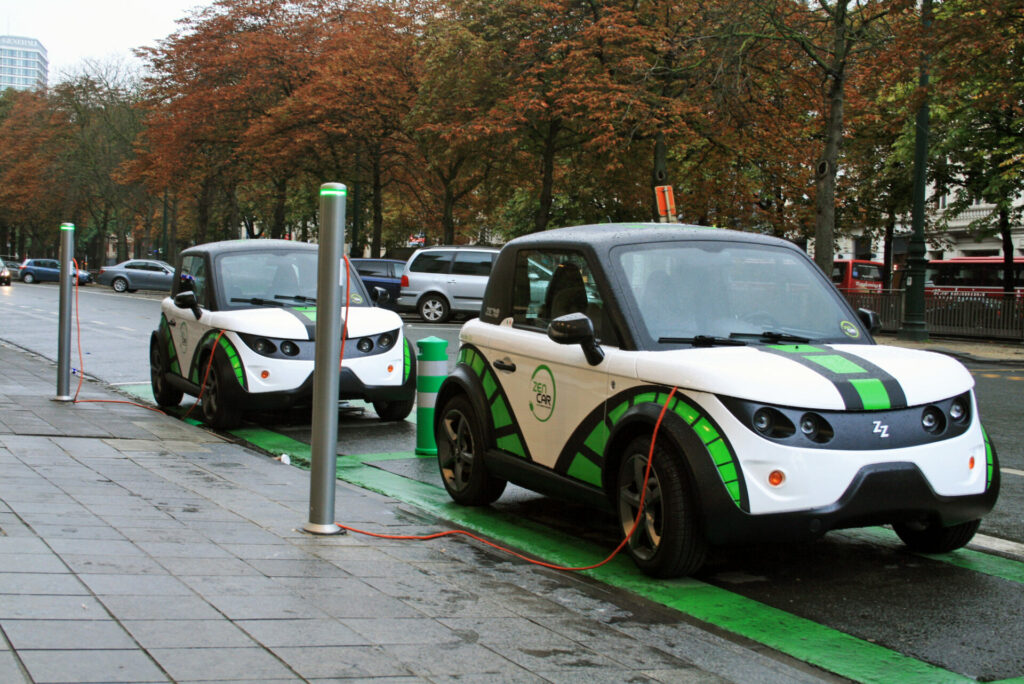BRUSSELS BEHIND THE SCENES
Weekly analysis and untold stories
With SAM MORGAN
Realistic uncertainty
People love certainty. It makes you feel comfortable, reduces stress and lets you focus on other tasks and problems. The economy feels much the same way about certainty. Unfortunately, the EU pulled the certainty rug from under one of its biggest industries this week.
The EU recently did a deal that means all new car and van sales will have to be zero-emission by 2035. That ostensibly means the internal combustion engine’s days are well and truly numbered.
But as is so often the case with EU law-mongering, there is more at play than first meets the eye. Loopholes and exemptions written into the legislation mean that the demise of the engine could have been greatly exaggerated.
The ink is barely dry on the emissions agreement yet one of the European Commission’s top officials has already cast massive doubt on how effective the landmark deal might actually be.
BRUSSELS BEHIND THE SCENES is a weekly newsletter which brings the untold stories about the characters driving the policies affecting our lives. Analysis not found anywhere else, Sam Morgan helps you make sense of what is happening in Brussels. If you want to receive Brussels behind the scenes straight to your inbox every week, subscribe to the newsletter here.
In an interview with Politico yesterday, EU industry chief Thierry Breton—France’s European Commissioner—outlined why he had pushed for a review clause in the new legislation, which can be activated in 2035.
This would trigger a stocktake of the auto industry’s efforts to neutralise their emissions and, according to Breton, an assessment “without any taboos” of the phaseout date. This will be music to the ears of many carmakers.
It means that 2026 will be a final battleground for the industry’s army of lobbyists, many of whom would have fought tooth and nail the last couple of years against the 2035 phaseout date. The review clause is a golden opportunity for the sector’s laggards.
Many carmakers are fully embracing the “gigantic changeover” Breton rightfully describes. Some realise that to fight it would be like trying to hold back the tide, while others see the benefit of first-mover advantage.
Plenty of marques are still betting on hybrid technology and will see this 2026 stocktake as reason not to ditch that strategy anytime soon. Others quietly think that the ICE is not going anywhere and will be powered by fuels sourced from green materials.
Germany—so often the main protagonist in any behind-closed-doors talks—had hoped to write e-fuels into the new rules, allowing manufacturers to build engines that run on fuels sourced from waste CO2 and renewable energy.
Other countries like Hungary and Italy also pushed for that at the eleventh hour but were eventually voted down. The review period in just three years opens the door for e-fuels to come back into the reckoning.
If the rollout of e-vehicles does not go particularly smoothly and arguments about cheaper total cost of ownership do not become mainstream, political will could build for a rewrite of the legislation just a couple of years after it was finalised.
The auto lobby will inevitably go back to tried and tested arguments like lack of charging infrastructure, loss of certain manufacturing jobs and the upfront costs associated with buying a battery-electric car.
All this adds up to an investment-souring climate of uncertainty, one which any industry would find unpalatable, but especially such a complex one like the automobile sector.
Instead of brokering an agreement that firmly fixes 2035 as an endpoint by which time carmakers will have had to get their houses in order, the Commission has fluffed its lines and given a notoriously stubborn industry an out.
Efforts to turbocharge the rollout of charger networks will now be tempered, retooling the labour market to shift workers from engine manufacturing to other parts of the supply chain will not be approached with the same gusto. ‘Wait and see’ will become policy again.
It also, paradoxically, risks driving the industry offshore just when Europe wants to remain in the vanguard. While the US is offering tax credits for EVs, the EU is keeping the handbrake on its own set of rules.
Contrast this legislation with the big climate target of net-zero emissions by 2050. There is absolutely no suggestion that the EU is going to review that goal anytime soon, other than bringing the date forward.
That has placed the EU firmly on a trajectory towards climate neutrality, spurring investments in renewable energy, energy savings and cleaner transport. Milestones along the way still need to be met and organised but it is all moving the right way.
Nobody is saying that completely changing how our transport networks are powered will be easy but it is foolish in the extreme to make life more difficult for everyone involved by operating under the guise of honesty and undermining regulation.
It is possible that the market is already developed enough to take care of this issue by itself, leaky rules be damned. One thing it will not take care of is the misguided notion that every car must be replaced with a zero-emission alternative.
But that’s another massive problem for another day.
BRUSSELS BEHIND THE SCENES is a weekly newsletter which brings the untold stories about the characters driving the policies affecting our lives. Analysis not found anywhere else, Sam Morgan helps you make sense of what is happening in Brussels. If you want to receive Brussels behind the scenes straight to your inbox every week, subscribe to the newsletter here.

